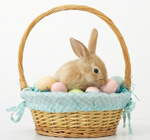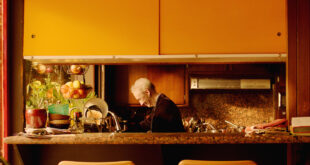Easter is a big holiday, but few know all about its origin. We know that the Easter bunny comes on Easter and delivers eggs, but where did such a tradition come from? The following article will answer those questions and satisfy our personal curiosity, and give you the knowledge to answer children’s many questions on the holiday. Here is some general information on Easter itself, the Easter Bunny, and the tradition of Easter eggs.
Easter
 Easter, while gaining popularity as a secular holiday with the Easter Bunny and Easter eggs, is primarily an important Christian holiday. Easter is connected to the resurrection of Jesus Christ, which happened over a three day period according to Christian faith. The day Jesus was crucified is called Good Friday, and Easter Sunday itself takes place on the day he came back to life.
Easter, while gaining popularity as a secular holiday with the Easter Bunny and Easter eggs, is primarily an important Christian holiday. Easter is connected to the resurrection of Jesus Christ, which happened over a three day period according to Christian faith. The day Jesus was crucified is called Good Friday, and Easter Sunday itself takes place on the day he came back to life.
Unlike the other big Christian holiday Christmas, Easter does not have a fixed date. Instead, it falls on or after the winter equinox, March 21. From there it is calculated following the cycle of the moon. Because of this volatility, sometimes different types of Christians celebrate Easter on difference days, depending on if they are Orthodox, Catholic, or something else.
The Easter Bunny
The legend of the Easter Bunny says a rabbit brings gifts to children the night before Easter Sunday. Specifically he brings colourful eggs and candy. As for where this idea originated, that is unknown. One theory, according to Wikipedia, is that the bunny originated with a spring children’s game in the 1700’s where a being named the Oschter Haws would leave colourful eggs for good children in a nest they had built out of garments. Supposedly, over the years this idea has evolved into the more famous egg hunt.
You may have noticed that Easter decorations overwhelmingly involve the bunny rabbit, with stuffed bunnies, bunny figurines, and tons of other bunny-related items. As for why a rabbit was chosen to represent Easter, this is because few animals symbolize the season of spring better. The bunny is known for its extraordinary fertility, and spring is a time of new life, as everything begins to bloom again. This is why the Easter Bunny seems so appropriate for this spring holiday.
The Easter Eggs
Fertility really is one of the main themes of spring, which is why eggs are also an icon of the Easter holiday. The new life theme is so important that people didn’t stop with just eggs; many decorations also include little chicks and plush ducks too.
Though fertility seems to be something of a pagan idea, the egg tradition also has its roots in Christianity. The blood of Jesus was said to have spread over some eggs that were placed at the bottom of the cross he was on, where it painted the eggs red. So that’s where the idea of painting the eggs came from. In fact, further in to the tradition, once the eggs have been painted red, Christians were supposed to tap them and say an Easter incantation praising Jesus’ resurrection.
Obviously, the color choices for the eggs have evolved from the original red to multi-coloured, and often pastel, but you can see where the tradition originally came from. In fact, the egg tapping itself has transformed into a different game where you tap until you find the hardest egg. In this game, the egg that survives the most taps without breaking wins.
So there you have it! The holiday of Easter has a long and interesting tradition that has evolved greatly overtime. Now that you are armed with the knowledge, you’ll be able to answer any questions those curious children you know may have. This will also help you find the most appropriate stuffed bunnies and bunny figurines to mimic the Easter Bunny. Have a happy holiday!









- 12 years ago